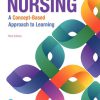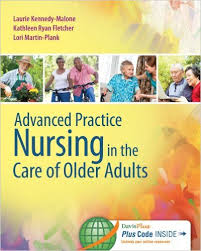Test Bank Advanced Practice Nursing Care Older Adults Fletcher Malone Plank
$35.00 Original price was: $35.00.$26.50Current price is: $26.50.
Test Bank Advanced Practice Nursing Care Older Adults Fletcher Malone Plank
Instant download Test Bank Advanced Practice Nursing Care Older Adults Fletcher Malone Plank pdf docx epub after payment.
Chapter 2: Health Promotion
Multiple Choice
Identify the choice that best completes the statement or answers the question.
____ 1. The leading cause of death in elderly travelers worldwide is:
| A. | Cardiovascular disease |
| B. | Infections |
| C. | Accidents |
| D. | Malaria |
____ 2. Which of the following should be avoided in countries where food and water precautions are to be observed?
| A. | Hot coffee |
| B. | Bottled water |
| C. | Salad buffet |
| D. | Unpeeled bananas |
____ 3. What insect precautions are not necessary to prevent insect-borne diseases in the tropics?
| A. | Using 100% DEET on skin to prevent bites |
| B. | Treating clothes with permetherin |
| C. | Covering up exposed skin to lessen biting surface |
| D. | Taking malaria pills as directed for areas at risk for malaria |
____ 4. An example of secondary prevention you could recommend/order for older adults would be to:
| A. | Check for fecal occult blood |
| B. | Wear seat belts in the car |
| C. | Provide foot care for a diabetic patient |
| D. | Administer a tetanus shot |
____ 5. Ali is a 72-year-old man who recently came to the U.S. from Nigeria. He reports having BCG (bacille Calmette-Guerin) vaccination as a child. Which of the following is correct regarding a tuberculin skin test?
| A. | It should not be done at all. |
| B. | It should be read as smaller than it really is. |
| C. | Vaccination history is irrelevant; read as usual. |
| D. | It should be read as larger than it really is. |
____ 6. A 72-year-old woman and her husband are on a cross-country driving vacation. After a long day of driving, they stop for dinner. Midway through the meal, the woman becomes very short of breath, with chest pain and a feeling of panic. Which of the following problems is most likely?
| A. | Pulmonary edema |
| B. | Heart failure |
| C. | Pulmonary embolism |
| D. | Pneumonia |
____ 7. Ivan W. is a 65-year-old man who is new to your practice. He has a history of COPD, CAD, hypertension, and type 2 diabetes mellitus. He has had no immunizations since his discharge from the military at age 25. Childhood diseases included chickenpox, measles, mumps, and “German measles.” He presents for a disease management visit. Which of the following immunizations would you recommend for Ivan?
| A. | MMR, influenza, pneumococcal, Zostavax |
| B. | Influenza, pneumococcal, PPD, Hepatitis B |
| C. | Tdap, pneumococcal, influenza, Zostavax |
| D. | Hepatitis B, influenza, pneumococcal, Hepatitis A |
____ 8. Leo L. is a 62-year-old African American male who comes for an initial visit to your practice. Personal health history includes smoking 1 pack/day since age 11, consuming a case of beer (24 bottles) every weekend, and working as an assembler (sedentary job) for the past 10 years. Family history in first-degree relatives includes hypertension, high cholesterol, heart attack, and type 2 diabetes mellitus. Leo’s BMI is 32; BP today is 130/86. You order a fasting glucose, lipid profile, and return visit for BP check. This is an example of:
| A. | Primary prevention |
| B. | Secondary prevention |
| C. | Tertiary prevention |
| D. | Health profiling |
____ 9. A local chapter of a nurse practitioner organization has begun planning a community-based screening for hypertension at a local congregate living facility. This population was selected on the basis of:
| A. | A predicted decreased incidence of high blood pressure in this population |
| B. | A recognized element of high risk within this group |
| C. | Readily available treatment measures |
| D. | Achieving an administrative goal for the congregate living facility |
____ 10. Performing range of motion exercises on a client who has had a stroke is an example of which level of prevention?
| A. | Primary prevention |
| B. | Tertiary prevention |
| C. | Secondary prevention |
| D. | Rehabilitation prevention |
____ 11. The nurse practitioner demonstrates an understanding of primary prevention of falling among the elderly through which management plan?
| A. | Evaluate a need for assistive devices for ambulation after the client has been injured from a fall. |
| B. | Provide resources to correct hazards contributing to falls in the home environment. |
| C. | Reinforce the need to use prescribed eyeglasses to prevent further injury from falls. |
| D. | Provide information about medications, side effects, and interactions. |
____ 12. An example of an active strategy of health promotion for an individual to accomplish would be:
| A. | Maintaining clean water in the local environment |
| B. | Introducing fluoride into the water |
| C. | Beginning a stress management program |
| D. | Maintaining a sanitary sewage system |
____ 13. You are working with an older male adult with a long history of alcohol abuse and a 30-year history of smoking. In recommending an intervention for this client, your responsibility is to:
| A. | Make the individual abandon his own health practices and follow your recommendations |
| B. | Register the patient for a local intervention program and secure payments |
| C. | Promote positive change in lifestyle choices |
| D. | Identify the barriers that the client will encounter |
____ 14. The four main domains of clinical preventive services that the practitioner will provide are:
| A. | Counseling interventions, screening tests, immunizations, and chemoprophylaxis |
| B. | Counseling intervention, screening tests, immunizations, and education |
| C. | Counseling interventions, transportation, screening tests, and immunizations |
| D. | Screening tests, brief psychotherapy, immunizations, and chemoprophylaxis |
____ 15. Which organism that can be prevented by immunization is most often responsible for an infectious “outbreak” in the nursing home setting?
| A. | Haemophilus influenza |
| B. | Streptococcus |
| C. | Influenza A |
| D. | Mycobacterium tuberculosis |
____ 16. What is the appropriate method for tuberculosis screening of an older adult entering a nursing home?
| A. | 5 tuberculin units intramuscular PPD injection and if negative repeat with same dose one week later |
| B. | 5 tuberculin units intradermal PPD injection and if negative repeat with same dose one week later |
| C. | Chest x-ray at the same time of PPD testing |
| D. | 5 tuberculin units intradermal PPD injection and if positive repeat same dose in one week |
Chapter 2: Health Promotion
Answer Section
MULTIPLE CHOICE
- ANS: C PTS: 1
- ANS: C PTS: 1
- ANS: A PTS: 1
- ANS: A PTS: 1
- ANS: C PTS: 1
- ANS: C PTS: 1
- ANS: C PTS: 1
- ANS: B PTS: 1
- ANS: B PTS: 1
- ANS: B PTS: 1
- ANS: D PTS: 1
- ANS: C PTS: 1
- ANS: C PTS: 1
- ANS: A PTS: 1
- ANS: C PTS: 1
- ANS: B PTS: 1












